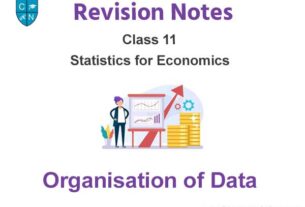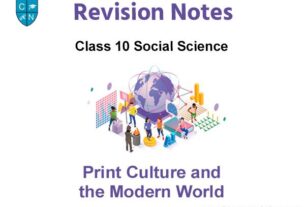Please refer to Human Capital Formation in India Class 11 Economics notes and questions with solutions below. These revision notes and important examination questions have been prepared based on the latest Economics books for Class 11. You can go through the questions and solutions below which will help you to get better marks in your examinations.
Class 11 Economics Human Capital Formation in India Notes and Questions
Q1. What are the indicators of educational achievement in a country .
Answer :
Adult and female education :
in order to eradicate illiteracy among the adults, special arrangements have been made for adult education . Importantly National literacy mission was set up in 1988 . Since 1976 formal education program has been launched it AIMS at providing meaningful education to the youth of the age group of 15 to 25 years. In order to provide technical education to the women many women’s polytechnics have also been established. ‘Women education council’ is a significant step to promote education among women
Elementary education:
Elementary education covers students from class 12 8 in the age group of 6 to 14 years. The number of primary and middle schools has considerably increased.
Total literacy campaign:
National literacy mission was launched to render everybody literate in the country. Please programmer has been recast as ‘ saakshar Bharat ‘ videshi Central focus on female education. The program cover all those in the age group of 15 and above .
Question 2 Bring out the differences between human capital and human development.
Answer: While human capital focuses on investment in education and health sector to increase productivity and efficiency of workforce on the other hand, human development focuses on investment in education and health sector to increase the general well-being and standard and quality of living of human capital.
Q3. how is human capital formation helpful in reducing inequality of income .
Answer : human capital formation is an important means of reducing inequality of income. Higher the rate of human capital formation greater would be the rate of participation. Increase in the rate of participation would lead to increase in the share of wages in national income. Accordingly inequality would reduce.
Q4. Education is considered to be an important input for the development of a nation how.
Answer :
1. Education produces responsible citizens.
2. It develops science and technology
3. It facilitates the use of natural and human resources of all regions of the country.
4. It explains mental horizon of the people.
5. It helps economic development through greater participation of the
people in the process of growth and development.
6. It develops cultural standards of the citizens.
7. It develops human personality
QUESTION 5 How is health a source of human capital formation.
Answer :
Expenditure on health: “ a sound mind in a sound body “ is an old saying . expenditure on health makes a man more efficient and therefore more productive. Is contribution to the production process tends to rise. He adds more to GDP of the nation then a sick person . Expenditure on health and therefore is an important determinant of human capital formation .
Q6. Do you agree with the statement that human resource has developed into the main economic factor?
Answer : Yes I agree with the statement because of followings reason :
1. Change in emotional and material environment of growth: human capital formation and generates a change in emotional and material environment of growth. A) emotional environment becomes conducive to growth as people tend to to acquire growth-oriented attitude and aspirations . B) material environment becomes helpful to growth as the society now possesses higher number of skilled and trained workers to implement the plans and programmers of economic growth .
2. Higher productivity of physical capital: human capital formation increases productivity of physical capital. Specialized engineers skilled workers can certainly handle machines better than the others .
3. Innovative skills: human capital formation facilitates innovations the undercurrent of growth and development. Larger the number of skilled and trained personnel, greater the possibilities of innovations in the area of production and related activities. Innovation is the lifeline of growth.
4. Higher rate of participation and equality: by enhancing productive capacities the labour force, human capital formation induces greater employment. This increased the rate of participation.
1.The ability to read and write is known as:
A. Education
B. Literacy
C. Human capital
D. Human development
Answer ( B ) ( 1 )
2.The stock of ‘ skill and expertise’ office at a point of time is known as:
A. social infrastructure
B. Human capital
C. Physical capital
D. None of these
Answer ( B ) (1 )
3.which of the following is the problem of human capital formation in India:
A. Brain drain
B. Low academic standards
C. Rising population
D. All of these
Answer ( D ) (1 )
4.which of the following organizations is engaged in designing text material up to the senior secondary level :
A. UGC
B. AICTE
C. ICMR
D. NCERT
Answer ( D ) (1)
5.the responsibility of direction and control of higher education is with:
A. Government of India
B. Department of higher education
C. University grants commission
D. None of these
Answer ( D ) (1)
6.who is responsible for the implementation of rules and regulation for technical education in the country :
A. National council of educational research and training
B. University grants commission
C. All India council of technical education
D. Indian council for medical research
Answer ( C ) (1)
7.human capital formation leads to :
A. Efficient utilization of inputs
B. Increases in the stock of physical capital
C. Increase in GDP growth
D. Both ( A ) and ( C )
Answer ( D ) (1)
8.Overall literacy rate ( census 2011 ) in India is :
A. 74%
B. 70%
C. 76%
D. 68%
Answer ( A ). (1)
9.what is female literacy rate in India :
A. 68%
B. 65.5 %
C. 74%
D. None of these
Answer ( B ). (1)
10.As per census 2011 the literacy rate in rural India is:
A. 74%
B. 68.9 %
C. 60%
D. None of these
Answer ( B ). (1)
11.Male literacy rate in India according to census 2011 :
A. 80%
B. 85%
C. 82.1 %
D. None of these
Answer : (C)

We hope the above Human Capital Formation in India Class 11 Economics are useful for you. If you have any questions then post them in the comments section below. Our teachers will provide you an answer. Also refer to MCQ Questions for Class 11 Economics


